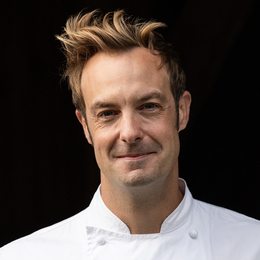Knowledge Base > Barton Seaver - The Holiday Meal, Part 4: Even More Sides

Barton Seaver - The Holiday Meal, Part 4: Even More Sides
This event was on
Tuesday, November 16, 2021 at 11:00 am Pacific, 2:00 pm Eastern
Join Chef Barton Seaver for The Holiday Meal Part 4 to learn tips, tricks, techniques for preparing holiday sides dishes that would be welcome on any table!
Bring your questions f… Read More.
Question:
Does using both oven racks change the way food roasts , and what racks to use for which foods?
— Darlene Calderone
Answer:
Yes, the answer is absolutely yes. When cooking, it's the amount of heat, the size and cut of the ingredient, the nature of the ingredient, and proximity to heat, that are sort of the critical components there. So if you've got an oven that has, and every oven is different, and I'm not just talking this CornuFe oven from a Wolf range. No, this CornuFe to the next CornuFe are gonna be different. Every oven is its own thing. You need to learn your own oven if it has hotspots, et cetera. So, depending on which cooking method you are using, so if you have your oven on roast, some ovens will just have a bottom heat unit. Others will do dual heat, where you've got from above and below. So that is going to change the nature of what you're cooking. I tend to put the things that need to cook quickly, so diced up, you know, chunked up vegetables, you know, root vegetables and such. I put those up at the top because you want to use high heat for those. You want that caramelization. You want that char consistency of cooking. So I put those up at the top where heat rises, right? So the top of your oven is going to be more consistent in that temperature, I believe. So go up there. All right. So we're at a boil now. So I'm just gonna turn that down to a simmer. The other thing is how much food you put in your oven at once, and also how often you open your oven. If you're trying to do four things at once, where you have two racks and you've got half sheet trays, you know, in each quadrant, et cetera, and you're opening the oven every five minutes to pull one out or to turn or to baste, every time you open that door, you're dramatically reducing the temperature of your oven. So a good way to cook is to sort of strategize around your oven. If you've got a couple of things that cook at the same temperature, cook those first. Your roasted root vegetables, those can cook and be served at room temperature. They don't need to be served hot, especially if you put like a nice, little acidic sauce with them, and I'll show you one later. So cook like things with like. The other thing to consider is if you have what vessel you're cooking in. So if you're cooking in a sheet tray that's very thin bottom, you're not gonna get a lot of heat conductivity through that. If you've got a pizza stone in your oven, like I've got, and I have this in there because it helps to retain heat. Once this thing gets hot, it uses a lot less energy for the oven because this thing maintains some of the temperature. So it's a sustainability thing for one, but it's also a consistency of cooking. But imagine this is 400 degrees, 'cause it preheated in the oven and I put a pan right on top of this, you're gonna get a lot more heat transference through this. So the other thing to consider is, are you using a thin sheet tray? Are you using a disposable aluminum tray? Are you using a cast-iron pan? Each of those are gonna have different heat conductivity and are going to yield in different results. Try caramelizing roosted root vegetables in a just disposable aluminum pan. You're not gonna get any help with it from the pan is what I'm saying. So there was a lot in there, but basically that's sort of the mechanics of ovens and food. The other thing about Thanksgiving is a lot of people tend to have a very big bird in their oven, which takes up a lot of the space, if not all of it. So, having an oven strategy is a very good thing.